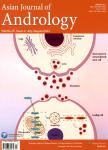Computer-assisted sperm morphometry fluorescence-based analysis has potential to determine progeny sex
Computer-assisted sperm morphometry fluorescence-based analysis has potential to determine progeny sex作者机构:TECNOGAM research group Environmental Sciences Institute (IUCA) Department of Animal Production and Food Sciences Higher Polytechnic School University of Zaragoza Ctra. Cuarte SIN 22071 Huesca Spain Department of Agriculture Forest and Food Sciences University of Torino Largo Paolo Braccini 2 10095 Grugliasco TO Italy Department of Functional Biology and Physical Anthropology University of Valencia 469100 Burjassot Valencia Spain UMR 1388 INRA-ENVT INPT Animal Cytogenetis GenPhySE National veterinary school of Toulouse 23 Chemin des Capelles 31076 Toulouse Cedex 3 France Mediterranean Institute of marine and terrestrial Biodiversity and Ecology (IMBE) University of Aix Marseille Chemin de la Batterie des Lions 13007 Marseille France TECNOGAM research group Environmental Sciences Institute (IUCA) Department of Agricultural and Environmental Sciences Higher Polytechnic School University of Zaragoza Ctra. Cuarte S/N 22071 Huesca Spain
出 版 物:《Asian Journal of Andrology》 (亚洲男性学杂志(英文版))
年 卷 期:2016年第18卷第6期
页 面:858-862页
核心收录:
学科分类:10[医学]
基 金:supported by the Spanish MINECO the DGA-FSE
主 题:bull computer-assisted sperm morphometry analysis sexing sperm morphometry
摘 要:This study was designed to determine the ability of computer-assisted sperm morphometry analysis (CASA-Morph) with fluorescence to discriminate between spermatozoa carrying different sex chromosomes from the nuclear morphometrics generated and different statistical procedures in the bovine species. The study was divided into two experiments. The first was to study the morphometric differences between X- and Y-chromosome-bearing spermatozoa (SX and SY, respectively). Spermatozoa from eight bulls were processed to assess simultaneously the sex chromosome by FISH and sperm morphometry by fluorescence-based CASA-Morph. SX cells were larger than SY cells on average (P 〈 0.001) although with important differences between bulls. A simultaneous evaluation of all the measured features by discriminant analysis revealed that nuclear area and average fluorescence intensity were the variables selected by stepwise discriminant function analysis as the best discriminators between SX and SY. In the second experiment, the sperm nuclear morphometric results from CASA-Morph in nonsexed (mixed SX and SY) and sexed (SX) semen samples from four bulls were compared. FISH allowed a successful classification of spermatozoa according to their sex chromosome content. X-sexed spermatozoa displayed a larger size and fluorescence intensity than nonsexed spermatozoa (P 〈 0.05). We conclude that the CASA-Morph fluorescence-based method has the potential to find differences between X- and Y-chromosome-bearing spermatozoa in bovine species although more studies are needed to increase the precision of sex determination by this technique.



